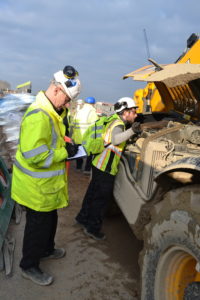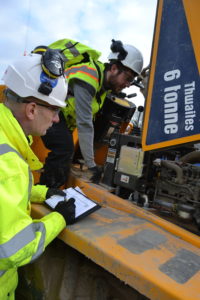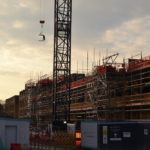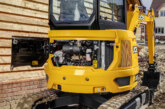 Low emissions zones are destined to be a feature of our towns and cities for generations to come but just how are they enforced? Construction Plant News investigates.
Low emissions zones are destined to be a feature of our towns and cities for generations to come but just how are they enforced? Construction Plant News investigates.
It has been characterised as a clean air emergency – and with good reason. London has been blighted by illegal levels of pollution for many years, with as many as 9,000 premature deaths attributable to poor air quality in our capital alone. In fact, on some measures –particularly levels of Nitrogen Dioxide – the city that once earned the unfortunate epithet of the big smoke is now more polluted than Beijing or New Dehli. Whilst in the public imagination the Diesel engine has been demonised as the prime suspect, in reality European legislation has made the most modern units far cleaner, and the Stage V powertrains of 2019 are now a radically different beast from their forebears.
It is those improvements that form the guiding principles of the Low Emission Zone (LEZ) regulations, encouraging the removal of the older, more polluting vehicles in favour of machines with greatly reduced NOx and particulate matter emissions, but just how is that regime enforced? Construction Plant News visited the New Mill Quarter development in Hackbridge, where Andrew Gordon and his colleague Luis Bassett – both Environmental Health Practitioners at the Regulatory Services Partnership, were inspecting the Barratt David Wilson Homes’ plant in use on this substantial site.
“Because we’re in the business of improving local air quality, having polluting vehicles removed can have a near immediate effect on the environment,” explains Andrew. “That’s why, if a site happens to be near a school, or residential conurbation, and it features offending machinery, it’s important to get it taken away.” For London generally, with the exception of what’s known as the Central Activity Zone (CAZ), all construction plant equipped with variable speed engines should be at least Stage IIIA, whilst for the city centre it’s Stage IIIB. If a machine is found to contravene those directions, then Andrew and Luis can ask for it be removed within five days.

“If it is not removed then that site becomes non-compliant, at which point we would inform the local authorities. Some of those sites may have planning conditions in relation to NRMM which stipulates certain level of emissions control on their machines, but all of those sites would be subject to a construction code of practice and it’s through those procedures that the contractor would see the situation escalate.” Of course, at the very least, being publicly denounced as a polluter is not great PR for any building firm, and it’s that cultural shift that is one of the key drivers amongst the operators of construction plant for ensuring that they are conforming.
“It’s now imperative for construction companies to be able to demonstrate their environmental credentials, and that’s why they work with us to prove compliance, so our soft enforcement approach is actually broadly welcomed by the industry,” continues Andrew. “In particular it’s the smaller organisations who really appreciate our help in ensuring that they’re within the rules, and our recommendations can help them achieve that.”
At present Andrew reports that only about one third of sites that they visit are self compliant, with an effective regime in place to ensure that all the machines they operate are within the emission standards, but a significant part of the Regulatory Services Partnership’s remit is to increase that figure dramatically. “We want companies to have internal procedures in place that means that all of the plant that passes the site gate is within the rules and that’s what our recommendations are designed to achieve.”
Crucial to that ambition is the levels of communication between contractor and the supplier. If the building company is hiring in plant, for instance, then they need to be made aware that the site is in area where certain standards are in place, and any sub-contractor that’s bringing in their own machinery also needs to ensure that they are following the rules.
On the Hackbridge site we visited everything was above the minimum regulation level, whilst site managers were able to provide an accurate record of all machinery in use on site. It is the EC Type Approval Number found on the engine plate which designates the emissions standards of that particular engine and for Luis and Andrew locating that number can often be the biggest challenge. Confusingly, the NRMM category also includes non-mobile plant like generators and compressors, so an audit will take in every machine working on site. “Compliance can be very straightforward if you have the processes in place,” concludes Andrew. “Make sure that you ask your plant supplier to provide you with the type approval number before the machine is delivered, for instance, and then have it checked once it arrives on site. When you’re being audited, ensure that you have a list of the equipment on site, and that it’s accessible to inspectors. If the Type Approval Number can’t be found we’ll need other supporting documents, so ensure these are to hand. These are just the kind of things we will recommend and plant operators should take on board.”









